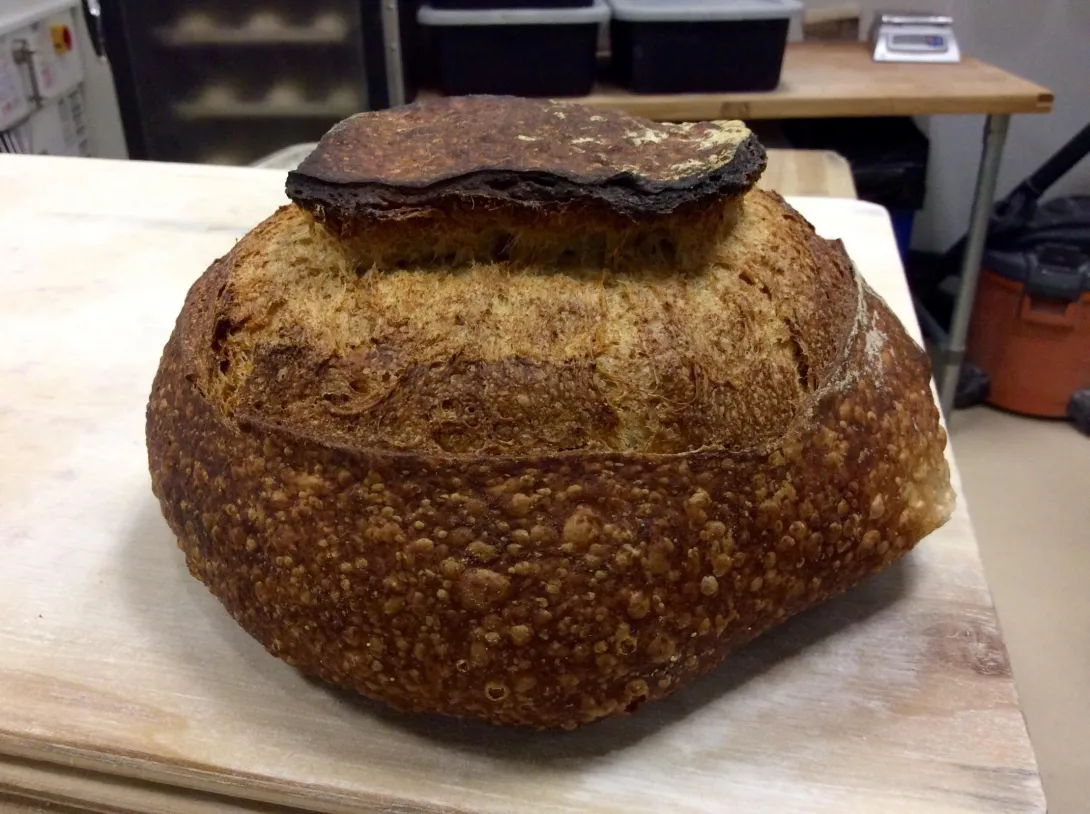Recently I made a research about how steam works in baking. I found four main functions:
1. Steam condensates and keeps the dough surface cool, preventing the crust to form too soon, what could hinder the oven spring
2. As the water condensates, it releases a lot of energy into the dough, heating it faster
3. Because the surface is not too hot, the enzymes work longer and we get a better crust
4. The combination of heat + water gelates the starch and we get a crispier and shiny crust
That makes perfect sense. Almost all of that information I got from the amazing book "On Food and Cooking", Mcgee
Knowing that, now I am am very confused about how baking in a dutch oven works.
- Because all the water in the environment (dutch oven with lid on) comes from the dough. I understand that it wont condense back into the dough, so I won't get that "water layer", neither the initial "blast" of energy of the steam condensing into the dough.
Is that right? What am I missing?
My personal experience says that DO works, I get a good oven spring and crust. But know I dont know if this is because of the "humid environment" of the trapped steam as almost everybody says, or just because the dough is closer to the radiant source, so it heats faster.
By the way, do we really need to bake at that high temperature? What would happen if we could bake at 100ºC (212 ºF) to get the oven spring and only after work on the crust color?
Thank you, and sorry for the english mistakes if I made them.
I'm still hoping you get an answer.
I get a good spring and crust using a lightweight steel bowl, not even preheated, over my loaf. I’ve read of people using disposable aluminum pans as steaming covers, even less heat capacity. So maybe it’s just the high humidity?
If you bake in a DO with the lid ajar, radiant heat but steam loss, what’s different?
it would be interesting to plot temperature and humidity inside the DO. My humidity sensors aren’t rated for oven heat though.
of cast iron. His conclusion was that even glass dome had the same effect, so basically it seems the humidity under the cover is what is important. I like his videos because he takes passed on wisdom and experiments to prove or disprove those.
https://youtu.be/nUNMWVSTrxg
great video.
I like Food Geek's experiments as well. He also debunks the need to pre-heat the oven, confirming that it's the steam that produces oven spring, not the heat. https://youtu.be/8CyYA-p1dMA
But in this video he shows that the bread baked in a preheated oven and a preheated dutch oven had the best result. Much better oven spring compared with bread baked starting with a cold oven and cold dutch oven or hot oven but cold dutch oven.
Thanks for the correction.
The fact that professional bakers have learned to inject steam into their ovens seems to support the conclusion that humidity, all by itself, helps crust expansion and formation. So I suspect it's wetness, rather than thermal effects, that matters for the crust.
The main trouble with baking at lower temperatures is that heat does not move well through a loaf. A risen loaf is, after all, hundreds of little pockets of air, which are pretty good insulators! You are trying to get the internal temperature of a loaf up to somewhere in the range of 190F or 90C, and especially for a big loaf that takes a surprising amount of time, even in a hot oven. By all means, experiment! But I think you will find that at 100C it dries out before it bakes.
As far as other temperature effects, using a pre-heated cast iron or clay baker seems to give me more uniform results in terms of browning, (neither burnt nor under-done) which I think is because the added thermal mass smooths our differences in heat within the oven.
It's hard to know, though! Home ovens vary a lot, and getting a really accurate sense of what is happening in your oven, how air is moving, and what temperatures are on the surface of the loaf etc. is more than most of us have the instruments to detect.
To achieve best production rate, quality and cost, commercial bakers do what's in their best interest to achieve the goals of the business. If commercial bakeries aren't filled with Dutch ovens and people manipulating them, it's a clue.
The Dutch oven may be a way to achieve some of the characteristics of good bread, for a home/hobby/amateur baker. There may be other ways for a home baker to achieve similar results. Because there doesn't seem to be a strong business driver to plumb the depths of Dutch oven baking science, the answers to the questions will likely be slow in coming, and will need questioning.
Directly to the question - are Dutch ovens a myth? It's likely.
The minute your drop your shaped dough onto the very very hot surface of the DO, steam begins to be released. Which is captured by the lid immediately placed on the DO. The steam keeps the top surface of the dough moist enough to enable it to achieve good oven spring before the top crust begins to form.
Loaf just below produced in $50K steam injected oven. Lower loaf
Image

in $30 DO.